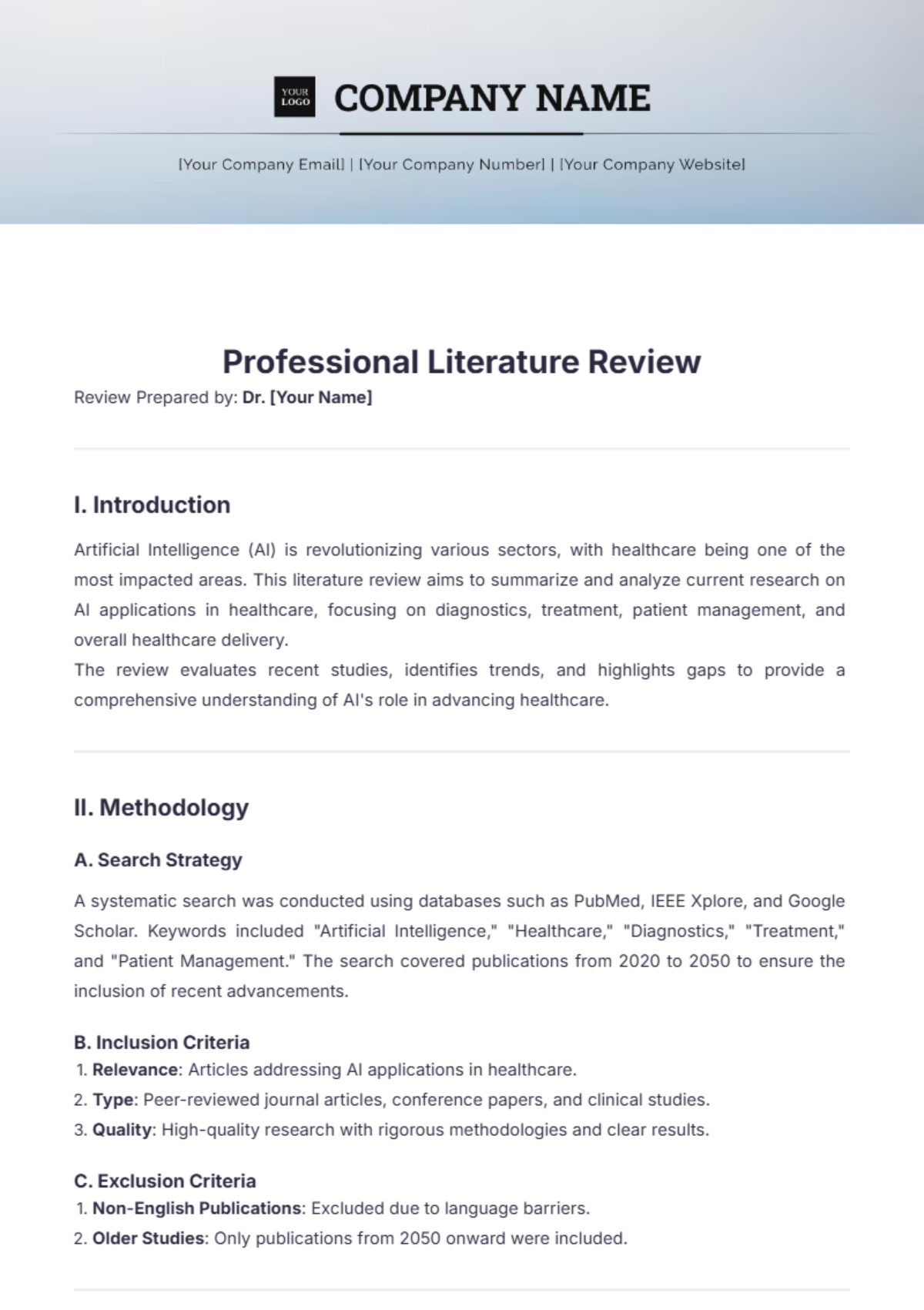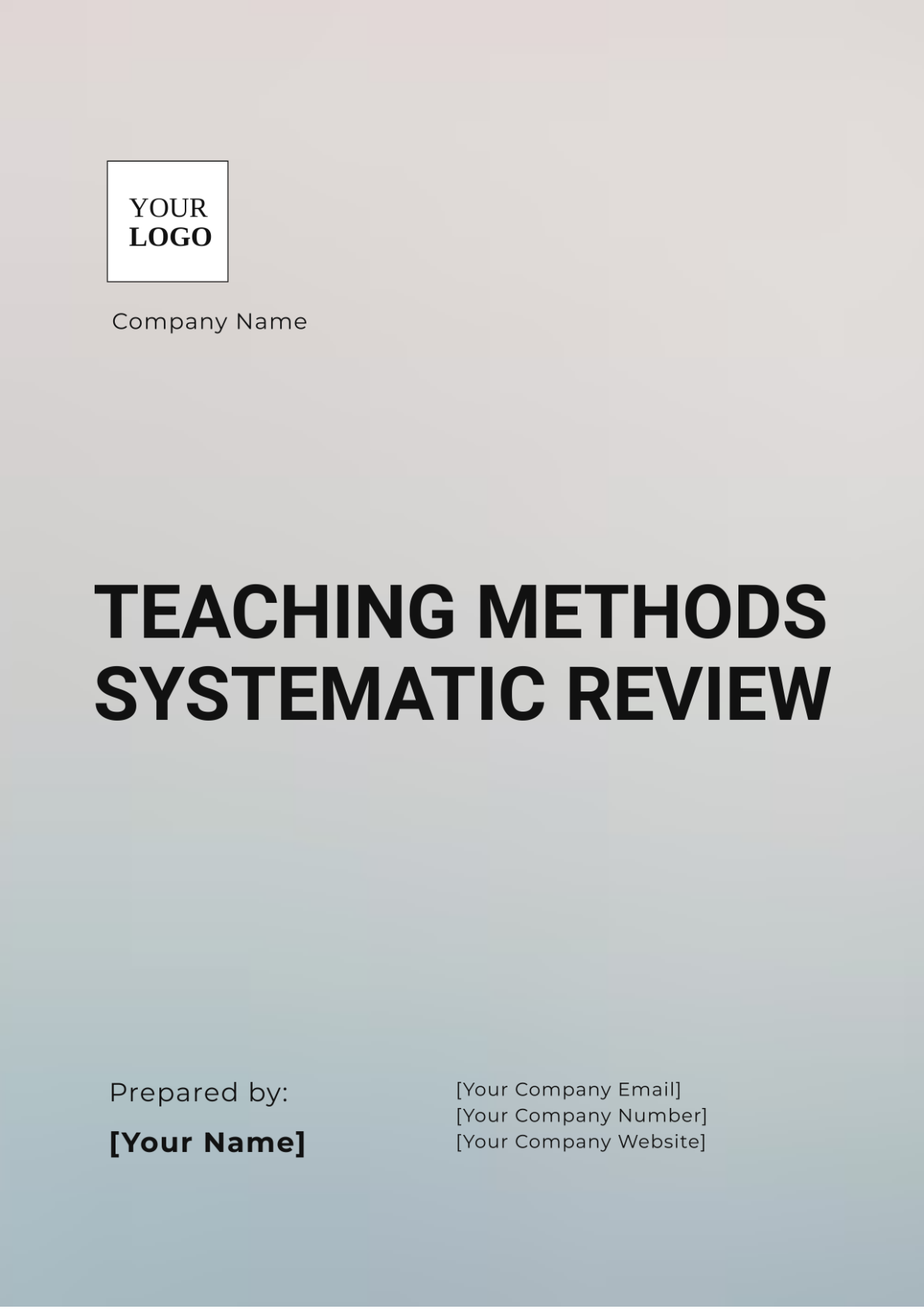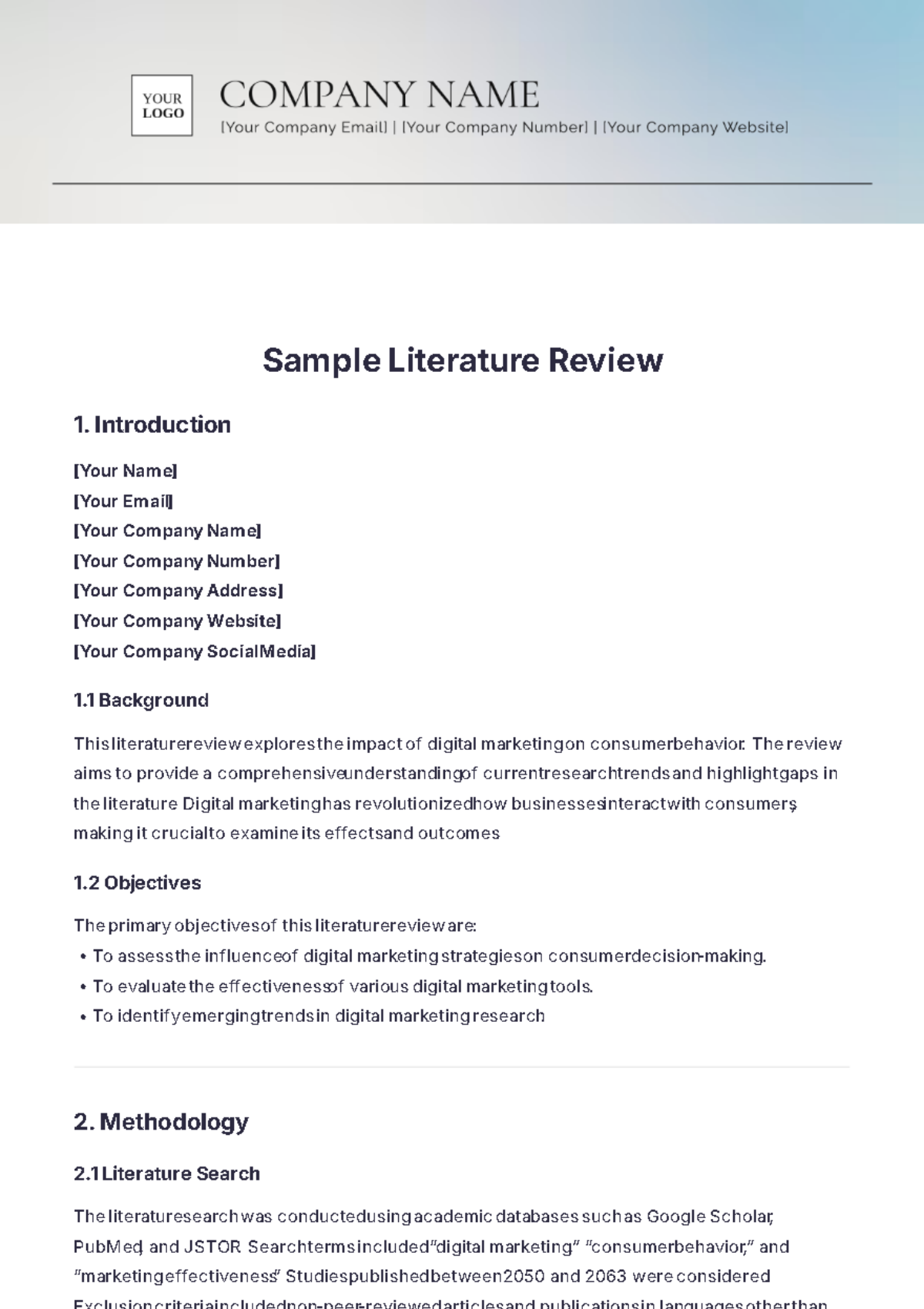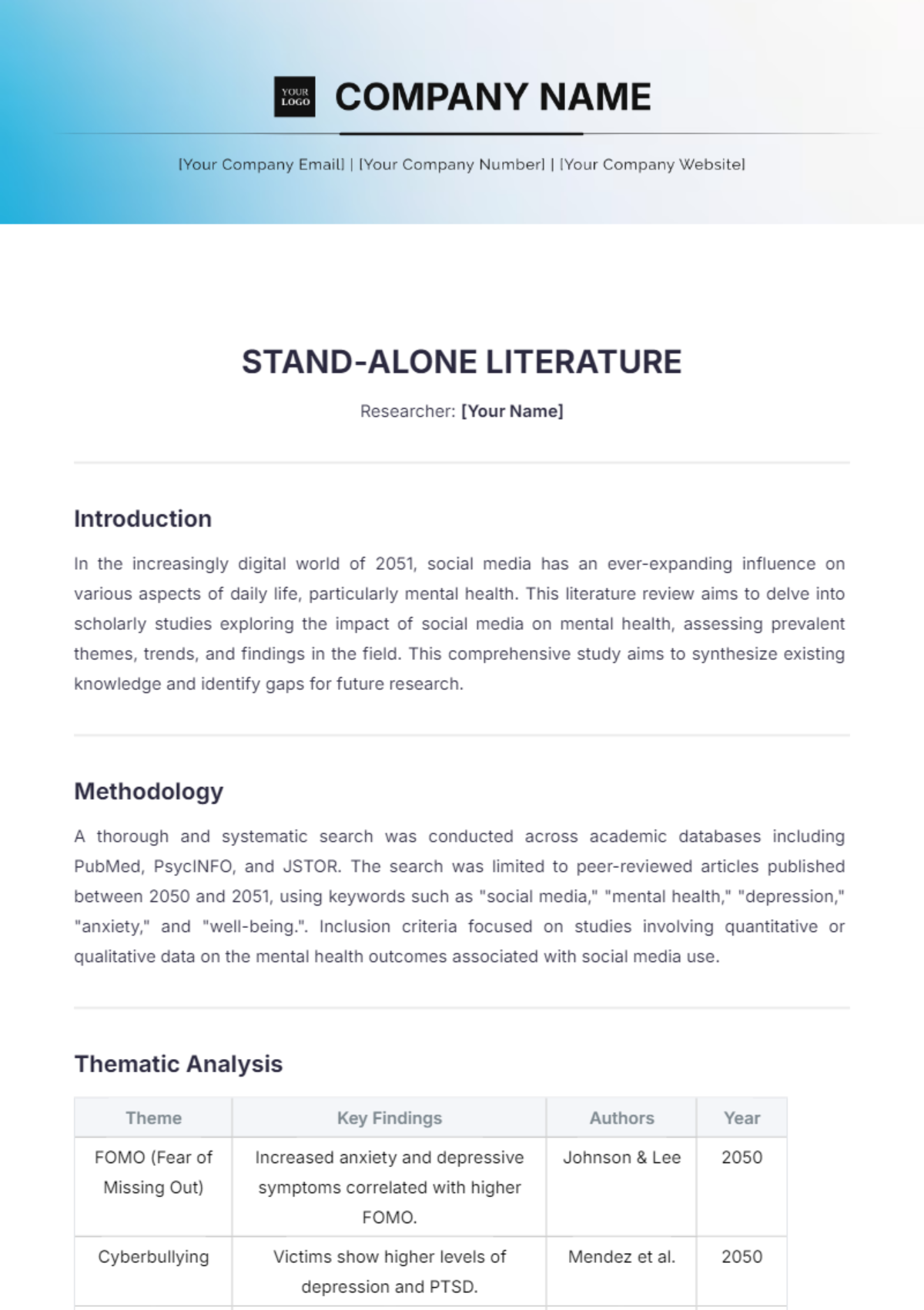Cybersecurity Systematic Review
Prepared By: [Your Name]
I. Introduction
As the digital landscape continues to expand, so does the scale and sophistication of cyber threats, making cybersecurity a priority for researchers, policymakers, and practitioners alike. The growing reliance on digital systems, from personal devices to critical infrastructure, has led to an increase in cyber attacks targeting sensitive data, financial systems, and even national security. This systematic review consolidates and synthesizes recent developments in cybersecurity research, highlighting key themes, methodologies, and the existing gaps that require further exploration. The review seeks to provide a comprehensive overview of the current cybersecurity landscape and offers insights into the future directions of this rapidly evolving field.
II. Methodology
To ensure a thorough and unbiased review, a structured approach was adopted, adhering to the principles of systematic reviews. The methodology includes:
Defining Research Questions and Objectives: Focused on the latest advancements, challenges, and prospects in cybersecurity.
Systematic Search of Databases: Relevant peer-reviewed journals, conference proceedings, and grey literature were identified using predefined search terms related to cybersecurity threats, defense mechanisms, and policy measures.
Screening and Selection: Titles, abstracts, and full-texts were screened for relevance and quality. Inclusion criteria were based on recent research (past 5 years), focusing on new trends and technologies.
Data Extraction and Quality Assessment: Key findings from selected studies were extracted, and the quality of each study was assessed using standardized evaluation metrics.
Synthesis and Analysis: Findings were synthesized into major thematic areas, with a focus on identifying patterns, trends, and gaps in the literature.
III. Key Findings
This review identified several critical trends and emerging themes in the cybersecurity domain:
Evolving Cyber Threats: The landscape of cyber threats is continuously evolving, both in diversity and complexity. Ransomware, phishing, malware, and Advanced Persistent Threats (APTs) remain prominent, but new forms of attacks, such as deepfake phishing and AI-driven exploits, are emerging.
Defensive Strategies and Technologies: Defensive strategies have increasingly moved towards a layered approach. Modern techniques now integrate firewalls, intrusion detection systems (IDS), encryption, and end-user education into a cohesive security posture. Furthermore, the concept of Zero Trust Architecture is gaining traction, emphasizing strict identity verification regardless of network access.
Encryption and Data Protection: As data breaches become more frequent, organizations are increasingly turning to robust encryption techniques to protect sensitive information. The use of homomorphic encryption and quantum-resistant algorithms is being explored to safeguard data from future threats posed by quantum computing.
Artificial Intelligence and Machine Learning: AI and machine learning (ML) have become critical components in cybersecurity, enabling real-time threat detection and adaptive responses. These technologies are particularly valuable in identifying anomalous patterns in network traffic and anticipating future attack vectors using predictive analytics.
Regulatory Compliance: Global and regional regulations such as GDPR, HIPAA, and CCPA have placed greater emphasis on data security and privacy. Organizations are now required to meet stringent compliance standards, which serve both as a protective measure and a legal mandate.
IV. Challenges and Limitations
While significant progress has been made, several challenges continue to impede cybersecurity efforts:
Rapid Evolution of Threats: Cyber threats are evolving at an unprecedented rate, often outpacing the development of defensive technologies. This dynamic nature of threats presents a continual challenge for cybersecurity professionals, requiring constant vigilance and adaptation.
Resource Constraints: Smaller organizations, in particular, face challenges in allocating sufficient resources—both financial and human expertise—for robust cybersecurity measures. This resource gap leaves many entities vulnerable to attacks.
Lack of Standardization: Despite advancements, there remains a lack of uniform standards and best practices across industries. This inconsistency results in variable protection levels and complicates collaborative efforts to secure systems.
Data Privacy vs. Security: Striking a balance between strong cybersecurity measures and protecting user privacy is an ongoing dilemma. Aggressive security protocols may inadvertently infringe on privacy rights, necessitating careful navigation of these ethical considerations.
V. Future Directions
Based on the findings, several recommendations for future research and practice emerge:
Advanced Predictive Analytics: Continued development of predictive models using big data and machine learning is essential to stay ahead of emerging threats. Future research should focus on enhancing these models to improve accuracy and responsiveness in anticipating attacks.
Interdisciplinary Collaboration: Addressing the multi-faceted nature of cybersecurity challenges requires greater collaboration across disciplines. Legal experts, social scientists, policymakers, and technologists must work together to develop comprehensive solutions that address both technical and human factors.
Policy Development and International Cooperation: Cyber threats often transcend national boundaries, requiring a coordinated international response. Future efforts should focus on creating globally unified cybersecurity policies that facilitate cooperation between nations and private sectors.
User Awareness and Training: Human error continues to be a significant vulnerability in cybersecurity breaches. Developing robust, widespread end-user training programs is crucial for reducing the risk posed by phishing and social engineering attacks. Increasing awareness among non-technical users can be a highly effective first line of defense.
Quantum Computing and Post-Quantum Cryptography: With the advent of quantum computing, existing encryption methods may become obsolete. Future research must prioritize post-quantum cryptographic solutions that can resist attacks from quantum computers, ensuring long-term data security.
VI. Conclusion
Cybersecurity remains a dynamic and rapidly evolving field that requires a multifaceted approach. This systematic review highlights the complexity of emerging threats, the advances in defensive strategies, and the critical need for ongoing innovation. As cyber threats continue to grow in sophistication, so too must the strategies used to combat them. Future research should focus on integrating technological advancements, promoting interdisciplinary collaboration, and fostering a global approach to cybersecurity. Only through these comprehensive efforts can we hope to enhance resilience and protect the increasingly digital world.

















































